 |
 |
 |
| |
A Phase-Ib/IIa dose-escalation study for evaluation of the safety, tolerability, and pharmacokinetics of OBP-601 (4'-ethynyl-d4T, Festinavir) in treatment-experienced, HIV-1-infected patients
|
| |
| |
Reported by Jules Levin
ICAAC 2010 Sept Boston
From jules: there isn't much taste today for developing a nuke but this data suggests activity against key nuke resistance mutations, however the authors don't breakout viral response by resistance mutation profile.
Cotte L1_Dellamonica P2, Raffi F3, Yazdanpanah Y4, Molina JM5, Boue F6, Urata Y7
1.Hospices Civils de Lyon, France 2. Universite de Nice, France 3. Hotel-Dieu, Nantes, France 4. Centre Hospitalier de Tourcoing, France
5. Hôpital Saint-Louis, Paris, France 6. Hôpital Antoine Beclère, Paris, France 7. Oncolys BioPharma, Tokyo, Japan
Background: OBP-601 is a novel NRTI with in vitro activity against several wild type and drug-resistant HIV-1 and prolonged activity after drug removal. OBP-601 is a weak inhibitor of mitochondrial DNA synthesis. OBP-601 was found to be safe and welltolerated up to 900 mg in single oral administration in healthy volunteers in a phase-Ia clinical study.
Methods: A double-blind, placebo-controlled, dose escalating study was undertaken in treatment-experienced, currently off-treatment, HIV-1-infected patients. Four cohorts of 8 patients were sequentially recruited, to receive OBP-601 monotherapy 100, 200, 300 and 600 mg QD for 10 days (6 patients/cohort) or placebo (2 patients/cohort). A 24h pharmacokinetic was done on day 1 and day 10. Safety, tolerability, HIV-RNA viral load and CD4 counts were assessed at baseline and at each visits. RT and protease genotyping were performed at baseline, day 10 and day 17.
Results: A total of 27 patients reported 99 AEs from which 62 where considered unrelated to OBP-601. No clear pattern of AEs was observed A dose-dependent correlation between AUC and dosage was observed. No new RT mutation emerged at day 10 and 17.
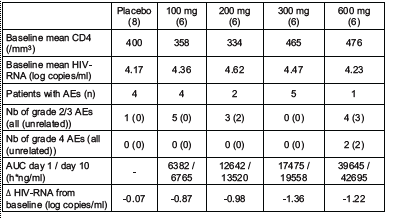
Conclusions: OBP-601 monotherapy for 10 days appears safe and well-tolerated up to 600 mg/day in HIV-infected, treatment-experienced patients. Antiviral efficacy appears remarkable for a nucleoside and deserves further studies.
BACKGROUND
OBP-601: 2,3-didehydro-3-deoxy-4-ethynylthymidine (4'-Ethynil-d4T, Festinavir)
Nanomolar activity against wild type (EC50 0.07μM) and drug-resistant HIV-1 including NAMs, M184V, K65R and Q151M mutants
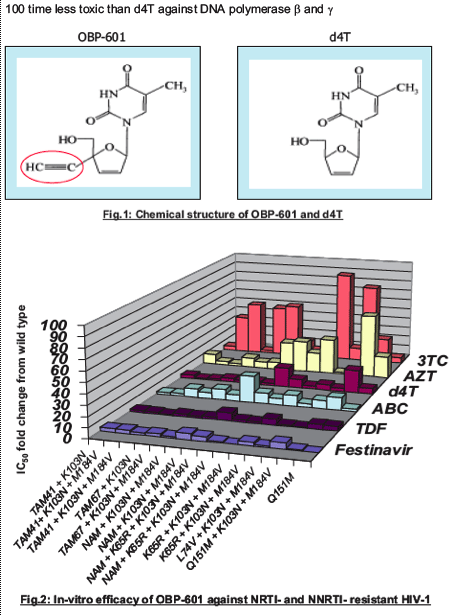
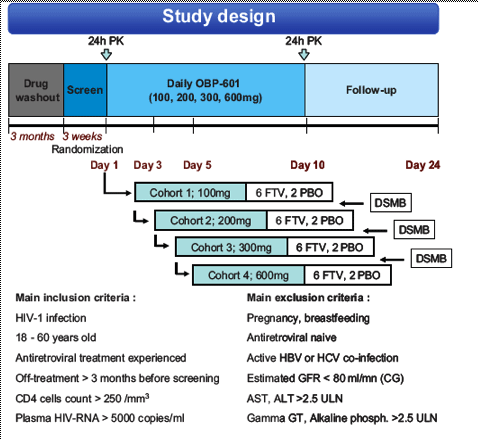
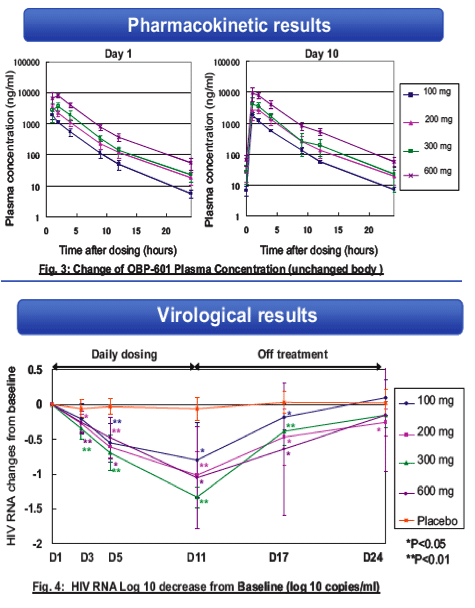
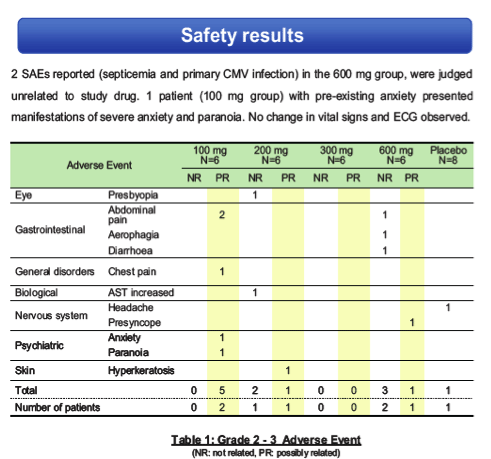
|
| |
|
 |
 |
|
|